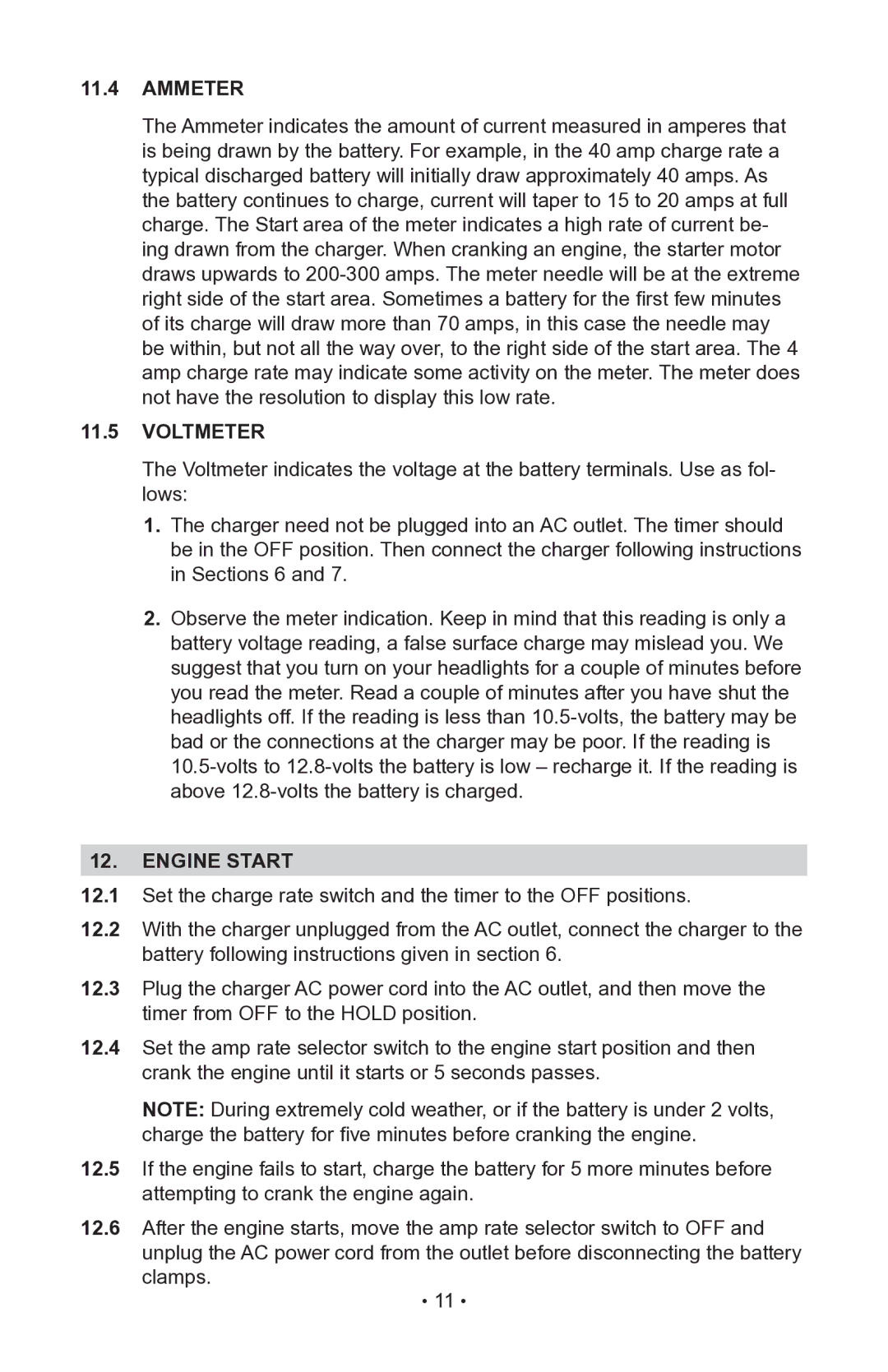11.4AMMETER
The Ammeter indicates the amount of current measured in amperes that is being drawn by the battery. For example, in the 40 amp charge rate a typical discharged battery will initially draw approximately 40 amps. As the battery continues to charge, current will taper to 15 to 20 amps at full charge. The Start area of the meter indicates a high rate of current be- ing drawn from the charger. When cranking an engine, the starter motor draws upwards to
11.5VOLTMETER
The Voltmeter indicates the voltage at the battery terminals. Use as fol- lows:
1.The charger need not be plugged into an AC outlet. The timer should be in the OFF position. Then connect the charger following instructions in Sections 6 and 7.
2.Observe the meter indication. Keep in mind that this reading is only a battery voltage reading, a false surface charge may mislead you. We suggest that you turn on your headlights for a couple of minutes before you read the meter. Read a couple of minutes after you have shut the headlights off. If the reading is less than
12.engine start
12.1Set the charge rate switch and the timer to the OFF positions.
12.2With the charger unplugged from the AC outlet, connect the charger to the battery following instructions given in section 6.
12.3Plug the charger AC power cord into the AC outlet, and then move the timer from OFF to the HOLD position.
12.4Set the amp rate selector switch to the engine start position and then crank the engine until it starts or 5 seconds passes.
NOTE: During extremely cold weather, or if the battery is under 2 volts, charge the battery for five minutes before cranking the engine.
12.5If the engine fails to start, charge the battery for 5 more minutes before attempting to crank the engine again.
12.6After the engine starts, move the amp rate selector switch to OFF and unplug the AC power cord from the outlet before disconnecting the battery clamps.
•11 •
